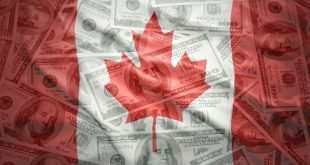Following solid Canadian employment figures, the USD/CAD pair plunges impulsively to 1.3636, down -0.30%. On the Canadian front, the number of new payrolls increased by 90.4K, but the rate of annual wage growth decreased to 4.8%.
According to Fed’s Bostic, the central bank is unsure about the best time and amount to lower interest rates. The USD/CAD pair is expected to see a significant decline to 1.3630 in the early New York session of Friday due to the release of positive Canadian Employment data by Statistics Canada.
According to the agency, 90.4K job seekers were hired by firms in April, a substantial increase over the average estimate of 18K. 2.2K people were laid off in March, according to the employment market.
While investors predicted a rise in unemployment to 6.2%, the unemployment rate has remained stable at 6.1%. On the other hand, the annual Average Hourly Wages decreased from 5.0% in March to 4.8%. Data on average hourly wages is a good way to predict future wage increase.
A softer inflation forecast is demonstrated by slower wage growth, which also slows down consumer spending. The Bank of Canada’s (BoC) interest rate outlook is anticipated to be less affected by the employment data overall since strong job increases will counteract weaker pay growth.
A dramatic recovery in the price of oil has contributed to the Canadian dollar’s continued appeal.
Friday’s third trading session saw West Texas Intermediate (WTI) futures on NYMEX maintain their winning streak amidst strong rumours that the Federal Reserve (Fed) will shift towards policy normalization following its meeting in September. It is important to remember that Canada is the country that exports the most oil to the US, and therefore rising oil prices help the Canadian dollar. Regarding the US Dollar, the US labour market’s gradual cooling has restrained the currency’s upside.
The US Dollar Index, which measures the value of the US dollar relative to six major world currencies, is marginally higher than the critical support level of 105.00. Investors are still confident that the Fed will begin lowering interest rates in September, while officials are still unsure about the matter. Raphael Bostic, the president of the Atlanta Federal Reserve, stated during the American session that while the bank is thinking about cutting rates this year, it is unsure of when and how much quantitative easing will take place.

 Noor Trends News, Technical Analysis, Educational Tools and Recommendations
Noor Trends News, Technical Analysis, Educational Tools and Recommendations




